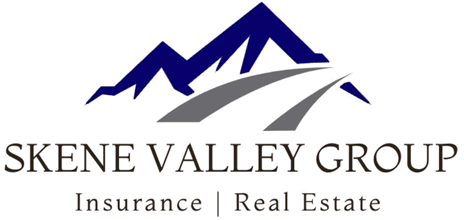Homeowner Insurance
from Skene Valley Group
Homeowner Insurance
Your home is the center of your daily life, and likely your most valuable asset. When your home is damaged or destroyed, you need your claim settled by an insurance company that understands this simple fact. Skene Valley Insurance can help you find the New York home insurance that will best meet your needs and provide the most valuable combination of tailored coverage, quality service and fair pricing.
Depending on where you live – a house, apartment, or condominium – the right home insurance policy can provide you peace of mind as well as the money you need to repair or replace your home and/or belongings.
New York Home Insurance
Whether you own or rent, insuring the place you call home can help protect you financially if you suffer a loss due to fire, theft, vandalism, or other covered events. It will also cover you in the event someone is injured while on your property and wins a legal judgment against you.
Homeowner insurance policies differ by which losses are covered, which coverages you choose, and what type of residence you own. You choose which policy is best for you, whether it’s a comprehensive policy that cover losses such as fire, hail, smoke, falling objects, vandalism and theft of personal property, or whether it’s a policy that covers only specified losses.
Whether you’re a home or condo owner, a renter, or a landlord, we will work with you to find a New York home insurance policy that fits your needs. We specialize in making it easy to choose the insurance coverage that gives you the best value for the best price.
Your home insurance policy is most often made up of the specific options you choose. How much you'll pay for your policy depends on:
- Options you select - Often home owner insurance options are priced individually, so how much you'll pay for your policy depends on what coverages you buy.
- How much you want to cover - Higher deductibles usually lower your premium price by shifting part of the loss payment to you. For example, if you had a $500 deductible, you would be responsible for paying the first $500 of the covered loss.
- Where you set your limits - You may choose to set higher limits than the recommended amount if appropriate to your situation and needs.
Worried you aren’t completely covered? Consider an umbrella insurance policy that extends your coverage.
The Right Coverage. The Right Price. The Right Value
The amount you pay for your home owners insurance depends on many factors. Think of your personal housing situation, and the assets you want to protect.
- Protection for Your Home
Property or Dwelling Coverage typically pays to repair or rebuild your home if it’s damaged or destroyed by an insured event like a kitchen fire or windstorm.
- Protection for You and Other People
Personal Liability Coverage applies if someone is injured or their property is damaged and you are to blame. The coverage generally applies anywhere in the world. When choosing your liability coverage limits, consider things like how much money you make and the assets you own. Your personal liability coverage should be high enough to protect your assets if you are sued.
- Medical Coverage
This covers medical expenses for guests if they are injured on your property, and in certain cases covers people who are injured off of your property. It does not cover health care costs for you or other members of your household.
- Additional Living Expenses
If you can’t live in your home because of a covered loss, your home insurance policy will pay additional living expenses (commonly for up to 24 months) while damage is assessed and your home is repaired or rebuilt.
- Protection for Your Belongings
Your home is filled with furniture, clothes, electronics and other items that mean a lot to you. Personal Property Insurance helps replace these items if they are lost, stolen or destroyed as a result of a covered loss.
- Scheduled Personal Property Coverage
If you have special possessions such as jewelry, art, antiques or collectibles you may want to talk to your agent about this additional coverage. It provides broader coverage for specific items.
- If You Rent Out Your Home
Landlords may have the option to buy optional liability coverage for the risks posed by tenant-occupied dwellings.
Protect the Things that Matter to You
Make an inventory of your home and personal belongings. If possible, make a list as well as take photos or video – using two inventory methods can help expedite the claim resolution process. Keep this list somewhere other than your home. Keep in mind that your policy doesn’t cover damages caused by poor or deferred maintenance on your part.
Every home is unique. Talk to us today to find out how to get the best price and value on New York home insurance for you.
Did You know?
Homeowners Insurance Replacement Cost
Many customers make the same statement to us regarding their homeowners insurance: ”I couldn’t sell my house for that much why do I have to insure it for that amount?" That is a true statement in many cases.
However, the market value of your home and the cost to replace your home are two different things. Many people refer to their assessment for tax purposes. The assessed value is usually based on what the tax assessor views as the potential sale price of the home. That is determined by looking at other similar type homes in the same area, and any sales of similar type homes. The assessor comes up with an assessed value and that is the amount you pay taxes on.
The replacement cost of the home is different. Most insurance companies require you to be insured to 100% of the replacement value. The replacement value of a home is determined by what would cost to replace your home as it stands today, with current labor and material rates.
So how does an insurance company come up with that figure? Each company has a program to help determine the replacement cost. Most companies use a program developed by a company called Marshall & Swift. It is based on the overall square footage of the home along with any additional features (like a deck, the type of construction or finished basement for example), and takes into account the area you live in. To rebuild a home in Saratoga may cost more than rebuilding a home in Argyle due to the prevailing labor rates in that area. Once that is determined, it is multiplied by the cost to rebuild per square foot. When those two figures are multiplied, it gives us the cost to rebuild/replace your home at today’s prices.
For example, in our area, it is not uncommon for the completed, finished square foot price to be $150 or more. If you had a home that has 1100 square feet and the cost to replace is $150 per square foot, the replacement cost of the home itself would be $165,000. You would need to insure your home for $165,000. If you are not insured to the correct value, it could affect how a claim is paid.
Not sure how you stand? Stop in on Thursdays and see Tom Abbott from Skene Valley Group, or call us at any of the 3 offices. We can help you determine if you are insured to the correct value. And remember, Parks Heritage members get a 5% discount with Mapfre Insurance, just for being a Parks Heritage FCU member.

 Get a
Get a 



